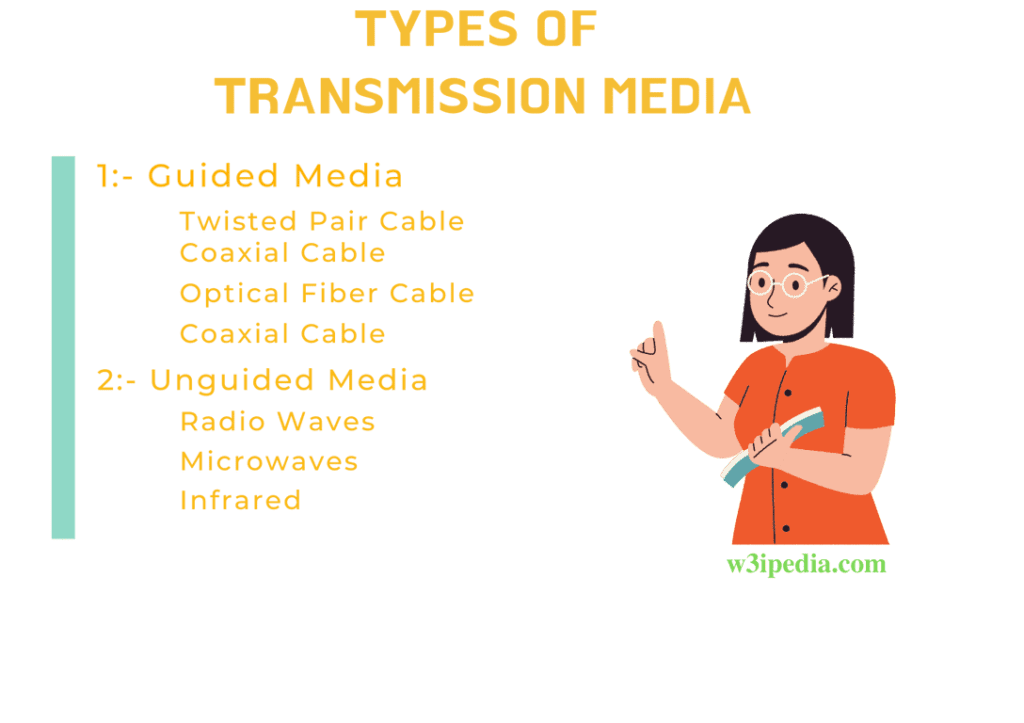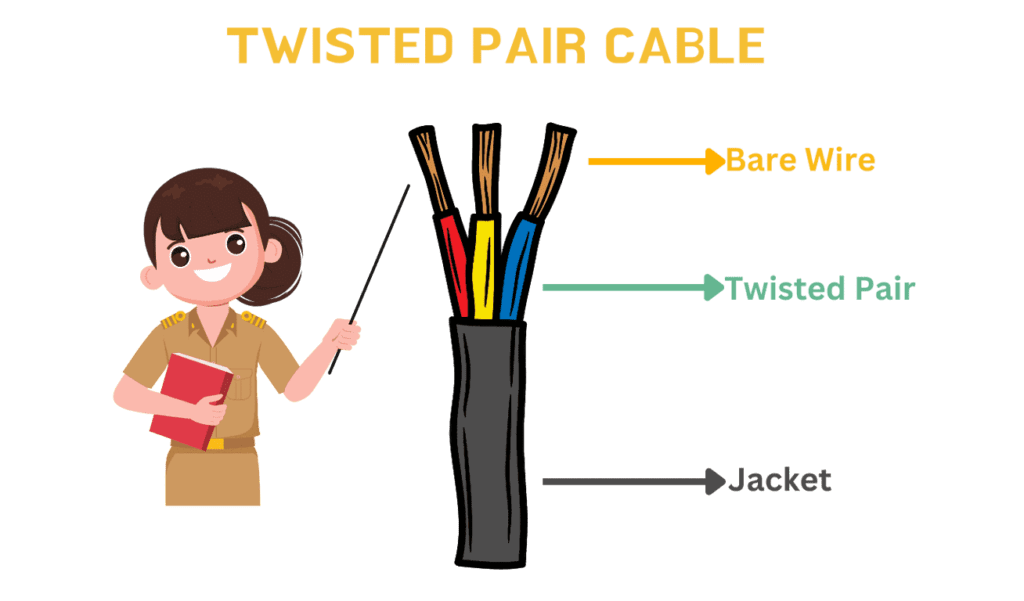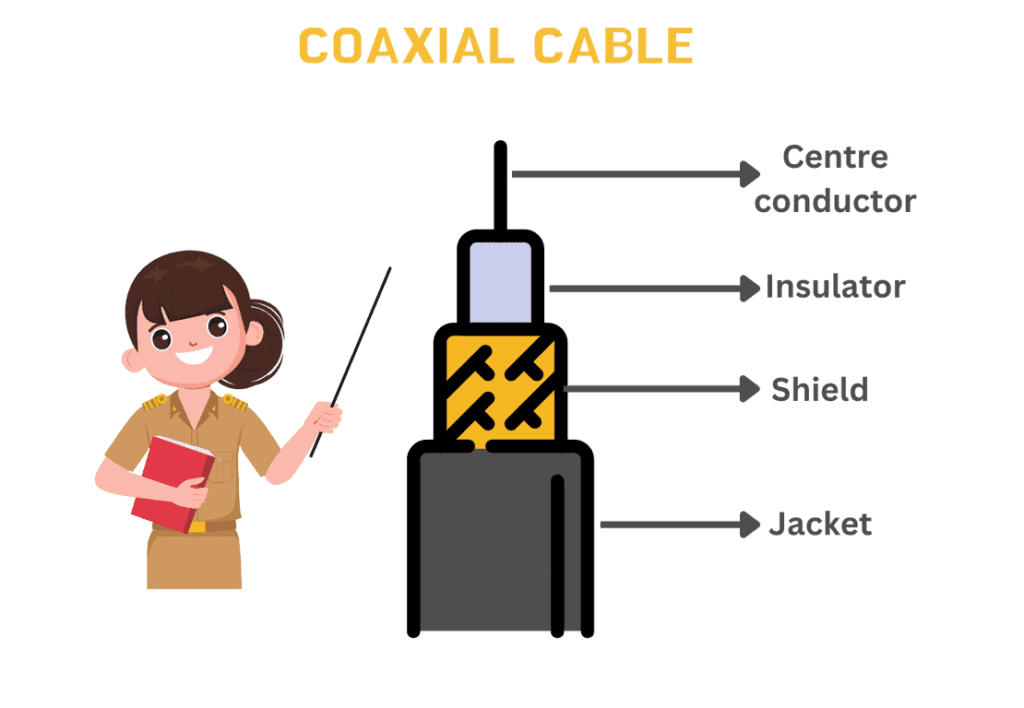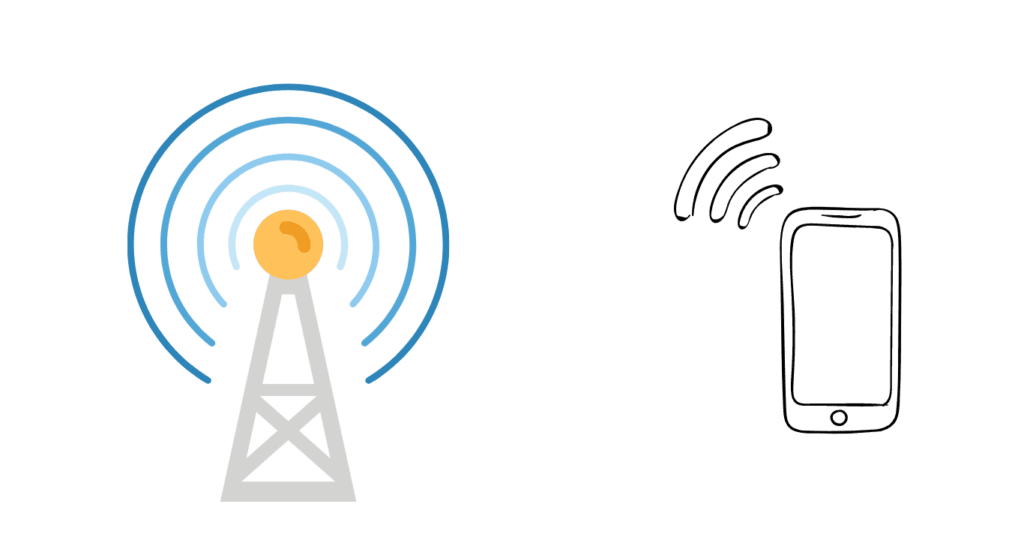Short Introduction
We’ll talk about several transmission media types in this tutorial and have a better understanding of them.
Recommended Tutorial
In this article, the various transmission media categories are defined. Here, we talk about the introduction and various transmission media types. To learn more, you can also read the following articles:
Table of Contents
ToggleDifferent Types of Transmission Media

Guided Media
-
- Guided media is often referred to as wired or confined media.
-
- In this type, signals can be transferred directly and narrowly through physical links.
Features of guided media include:
-
- the highest level of security
-
- super high-speed,
-
- and employed over short distances.
The following is a brief description of the three types of guided media:
Twisted Pair Cable

A physical media commonly known as a twisted pair is composed of two cables that have been wound around one another.
-
- Compare to other transmission media, twisted pair cables are less expensive.
-
- The twisted pair wire is simple to install,
-
- Additionally, the cable is thin.
-
- Medium:- Twisted Wire
-
- Speed:- 300bps-10mbps
In addition, there are two other types of twisted pair cables.
Unshielded Twisted Pair (UTP)
Unshielded twisted pair is a common technology in the field of communications systems.
Advantages of unshielded twisted pair cable
-
- It actually costs less.
-
- The unshielded twisted pair is simple to install.
-
- It is perfectly suitable for LAN at extremely high speeds.
Disadvantages of unshielded twisted pair cable
-
- Due to distortion, this wire can only be used over small distances.
Shielded Twisted Pair (STP)
-
- A special jacket is included in the STP cable to block outside interference.
-
- It is used in voice and data channels of telephone lines as well as quick data rate Ethernet.
Advantages of shielded twisted pair cable
-
- The price of better insulated twisted pair cable is in between moderate and expensive to maintain price ranges.
-
- STP is simple to install.
-
- In comparison to unshielded twisted pair cable, it has a larger capacity.
-
- It attenuates more strongly.
-
- The shielding is what allows for a faster data transmission rate.
Disadvantages of shielded twisted pair cable
-
- Compared to UTP and coaxial cable, it costs much more.
-
- It attenuates more quickly.
Coaxial Cable

-
- coaxial cable=contains of external and two parallel conductors with each conductor having a separate protective covering.
-
- Coaxial Cable is used to transmit data in 2-modes first is baseband mode and 2nd is broadband mode.
-
- Coaxial cable is widely used in cable televisions and analog television networks.
Advantages Of Coaxial cable:
-
- High-speed data transmission is easily possible.
-
- Comparatively speaking to twisted pair cable, it has better shielding.
-
- It simply offers more bandwidth.
Disadvantages Of Coaxial cable:
-
- Compared to twisted pair cables, it costs more.
-
- In the case that a cable fault happens, the entire network will fail.
Fiber optical Cable

Fiber optic cable consists of slim or slight strands of plastic or glass called cores. The wires are pretty much as slender as human hair. Fiber optic cable is used for light to transmit data. Each Strand is bordered by a layer of glass inside fiber optical cable called cladding. Most mobile phone companies use fiber optics in their network
Advantages of Fiber optic cable:-
-
- Fiber optic organizations work at an extremely high velocity.
-
- The Data Carrying limit is extremely high
-
- Fiber optic is lighter and little in size
-
- safer and dependable
-
- not impacted by electromagnetic waves
Disadvantages of Fiber optic cable:-
-
- difficult to install
-
- expensive
Unguided Media
-
- Unguided Media, as its term indicates, is not a guided medium, which only means that the network built using this kind of transmission medium cannot be connected to a specific physical plan.
-
- Less secure than guided media, electromagnetic signal waves are sent through the air over a larger geographical area.
Unguided transmission can be broadly classified into three types:
Radio Waves

The simplest type of signal transmission is by radio waves, which don’t require any complicated processing or transmission processes.
Utilizations for Radio Waves:
-
- When there is only one transmitter and many listeners, a radio wave is helpful for multicasting.
-
- Examples of radio waves include an FM (frequency modulation) radio, television, and wireless cell phones.
Advantages Of Radio transmission:
-
- Radio transmission is mostly used for mobile cellular phones and wide area networks.
-
- Radio waves are widely dispersed and can pass through solid objects like walls.
-
- The transmission rate for radio transmission is higher.
Micro Waves
Antennas are the primary component for sending and receiving data when using a microwave transmission medium.
Advantages of Microwaves:
-
- Compared to using cables, using microwaves is more affordable.
-
- Since no land is required for the installation process of cables, there is no need to purchase any land.
Negative aspects of microwave transmission:
-
- Eavesdropping
-
- Unphased signal
-
- Weather-related sensitivity
-
- Bandwidth limitation
Infrared (IR) Waves
-
- Since impediments prevent infrared (IR) waves from passing through, they are used in extremely short-range communication.
-
- Therefore, it prevents system access.
-
- These waves have a 300GHz to 400THz frequency range.
-
- Keyboards, wireless mice, printers, TV remote controls, and other devices use these waves.
The properties of infrared:
-
- supports high bandwidth
-
- Infrared radiation cannot pass the walls. As a result, infrared communication occurring in one room cannot be interrupted by nearby rooms.
-
- Better security is provided with less interference.
Recommended Tutorial
2:- Physical Structure of Networks | Network Topologies